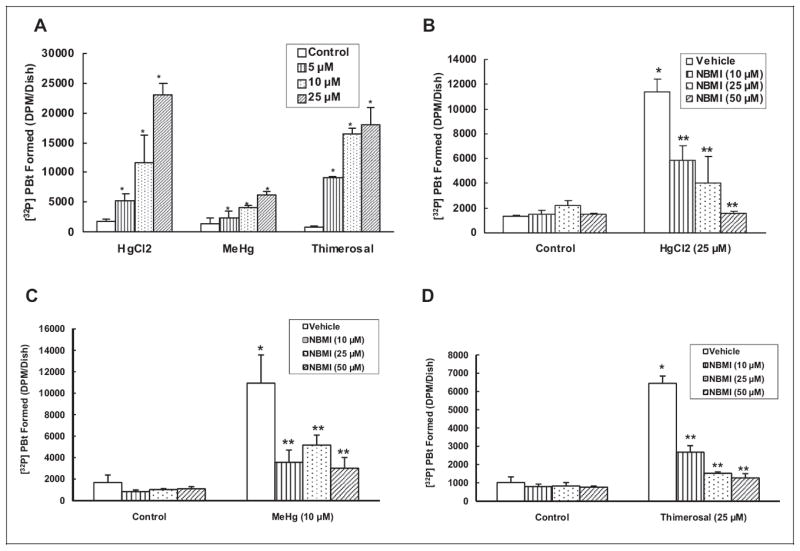Figure 2.

N,N′-bis(2-Mercaptoethyl)isopthalamide (NBMI) attenuates the mercury-induced phospholipase D (PLD) activation in a dose-dependent fashion in mouse aortic endothelial cells (MAECs). The MAECs (5 × 105 cells/35 mm dish) were labeled with [32P]orthophosphate in phosphate-free Dulbecco-modified Eagle medium (DMEM) for 12 hours. Following [32P]orthophosphate labeling, MAECs were treated with minimal essential medium (MEM) alone or MEM containing different concentrations (5, 10, and 25 μmol/L) of mercury(II) chloride, methylmercury, and thimerosal for 1 hour (A) in the presence of 0.05% (volume/volume [vol/vol]) 1-butanol. The MAECs were also labeled with [32P]orthophosphate, then pretreated with MEM or different concentrations of MEM containing NBMI (10, 25, and 50 μmol/L) for 1 hour, then treated with mercury(II) chloride (25 μmol/L) (B); methylmercury (10 μmol/L) (C); and thimerosal (25 μmol/L); (D), for 1 hour in the presence of 0.05% (vol/vol) 1-butanol. At the end of the incubation period, [32P] PBt formed was determined. Data represent mean ± standard deviation (SD) calculated from 3 independent experiments. *Significantly different at P < .05 as compared to cells treated with MEM alone. **Significantly different at P < .05 as compared to cells treated with MEM containing mercury alone.
